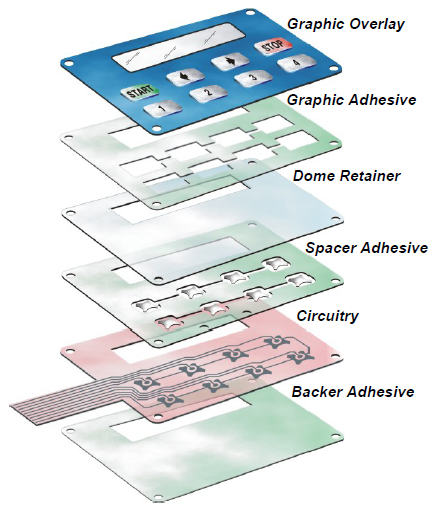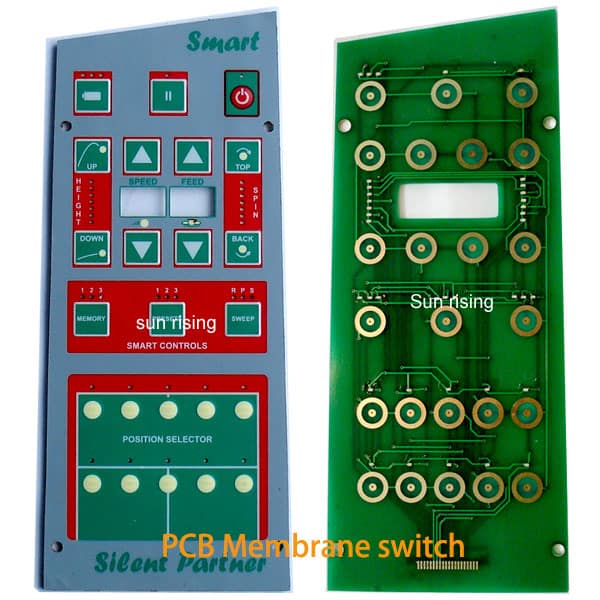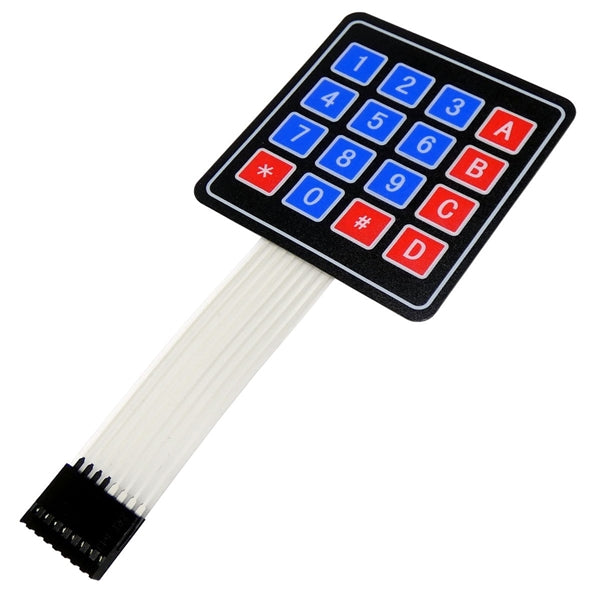Membrane Switches: A Key Component in Custom Control Panels
Membrane Switch Over Innovation: The Secret to Reputable and Affordable User Interfaces
Membrane button innovation has arised as an essential element in the design of customer interfaces, supplying both integrity and cost-effectiveness throughout a diverse range of applications. Its durable construction makes sure resistance to environmental difficulties, while the versatility in style permits for tailored options that fulfill particular industry needs. As we explore the multifaceted benefits of membrane buttons, their potential for advancement elevates questions regarding future applications and advancing fads. What does the next chapter hold for this technology in a significantly digital landscape?
Understanding Membrane Layer Switch Innovation
Membrane layer switch technology is an extensively used user interface remedy in various digital tools, using a smooth mix of capability and style. This innovation includes numerous layers of materials, typically being composed of a graphic overlay, spacer layer, and a circuit layer. The graphic overlay presents the interface elements, while the spacer layer separates the circuit layer from the overlay until an individual triggers a button.
When stress is put on the overlay, the circuit layer finishes the electrical circuit, sending out a signal to the gadget. This system permits for numerous configurations, consisting of responsive feedback and backlighting choices, improving user communication. Membrane switches are commonly manufactured using durable materials such as polyester or polycarbonate, making sure longevity and resistance to environmental aspects like wetness and dirt.
The flexibility of membrane layer changes allows their application in diverse industries, including medical tools, customer electronic devices, and industrial controls. Their portable design permits for assimilation right into space-constrained settings, supplying an efficient interface without endangering visual allure. Understanding the ins and outs of membrane layer button modern technology is essential for manufacturers and developers seeking to produce trusted and reliable human-machine interfaces.
Trick Advantages of Membrane Layer Buttons
While various interface options exist, membrane switches offer distinct advantages that make them a preferred selection in countless applications. Among the main advantages is their durability; membrane buttons are made to withstand rough ecological conditions, consisting of dampness, dirt, and temperature level fluctuations, making sure resilient efficiency. This durability significantly minimizes the demand for constant replacements, thereby reducing total upkeep prices.

Furthermore, membrane buttons are lightweight and small, making them ideal for applications where space is limited. Their low-profile design contributes to a streamlined look without compromising capability.
Cost-effectiveness is additionally a remarkable advantage, as the production process for membrane switches often tends to be less costly compared to standard mechanical buttons. This cost, combined with their dependability and convenience of installment, settings membrane layer changes as a useful remedy for a wide variety of sectors seeking reliable and efficient interface.
Applications Across Different Industries
Exactly how do membrane layer buttons adjust to the varied needs of numerous industries? Membrane layer switch modern technology is increasingly identified for its convenience, making it appropriate for a large array of applications throughout multiple markets.
In consumer electronic devices, membrane layer buttons provide a compact view website service for remotes and home devices, enhancing user experience through instinctive layout. Additionally, the industrial sector leverages membrane buttons for machinery control panels, profiting from their resistance to harsh settings, such as wetness and dirt.
Army and aerospace applications also utilize membrane layer buttons for their dependability and capability to withstand extreme conditions, making certain operational effectiveness in essential scenarios. The food and beverage market takes on these switches for automated systems, where sanitation and simplicity of operation are paramount (membrane switch). Ultimately, membrane layer switches are tailored to meet the one-of-a-kind demands of each market, verifying their essential function in contemporary innovation user interfaces
Design and Customization Alternatives

In the realm of membrane layer switch technology, style and customization choices play a critical role in boosting performance and customer communication. These switches can be tailored to satisfy specific operational requirements and aesthetic preferences, making them functional parts in various applications.
One of the key customization options is the format of the switch itself, which can be created to fit distinct individual interfaces and ergonomic factors to consider. By readjusting the form, size, click to read more and plan of buttons, manufacturers can produce instinctive designs that assist in simplicity of usage. In addition, the incorporation of various shades and graphic overlays permits branding and boosted presence, making certain that users can quickly identify functions.
Moreover, membrane layer switches can be engineered with various responsive responses systems, such as elevated buttons or distinct clicks, to boost the individual experience. Various materials can also be selected for longevity and environmental resistance, dealing with aspects such as moisture, temperature level variations, and chemical exposure.
Eventually, the considerable layout and customization choices offered in membrane layer switch modern technology equip services to develop customized remedies that not only fulfill useful demands but additionally line up with their branding and functional requirements.

Future Patterns in Membrane Layer Switches
As membrane switch technology proceeds to evolve, future trends are increasingly concentrated on boosting individual experience and integrating sophisticated performances. One considerable pattern is the combination of touch-sensitive and capacitive modern technologies right into traditional membrane layer switches. This development allows for more instinctive individual interfaces, supplying tactile responses while maintaining a sleek style.
An additional emerging trend is making use of eco-friendly products, driven by the growing need for lasting production techniques. Producers are seeking to minimize their carbon footprint by using recyclable substrates and low-impact inks, lining up with global sustainability goals.
Additionally, the increase of the Web of Things (IoT) is motivating the incorporation of clever features into membrane switches. Boosted connection options will make it possible for tools to interact with each various other, enabling seamless combination right into more comprehensive systems.
Additionally, improvements in printing innovations, such as electronic printing, are permitting for higher style versatility and modification. This makes Click This Link it possible for manufacturers to create detailed layouts and dynamic shades cost-effectively.

Final Thought
In verdict, membrane button modern technology represents a vital innovation in interface layout, providing considerable benefits in toughness, customization, and cost-effectiveness. Its extensive applicability throughout diverse markets highlights its relevance in modern-day technology. As advancements proceed to emerge, especially in touch-sensitive interfaces and lasting products, the potential for membrane layer switches to enhance customer experience and performance remains encouraging. Continued expedition of this technology will likely produce even more improvements and widen its extent in future applications.